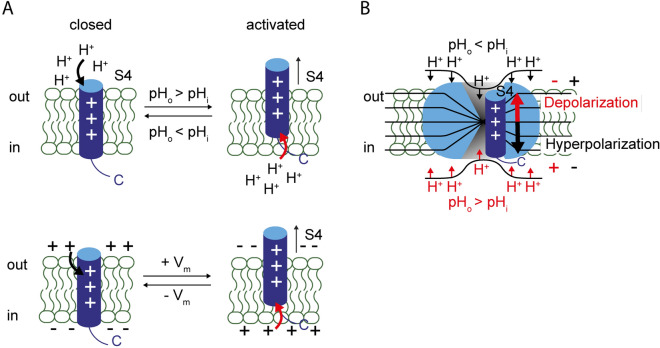Figure 7.
Both ∆pH and the membrane potential control S4 conformation. (A) proposed S4 conformation in the membrane as a function of either ∆pH (top) or voltage (bottom). Protons on one side of the membrane move S4 to the opposite side of the membrane (top), similar to the effect of membrane voltage (bottom). S1-S3 are omitted for clarity. “ + ” signs denote the charged arginines in S4. (B) cartoon depicting how S4 position is determined by both voltage and ∆pH across the membrane. Protons might exert electrostatic forces on Hv1, i.e. by protonation of a water wire in the VSD. The position of the mobile S4 segment depends on both, the electrochemical potential for protons and the membrane potential: excessive protons at the extracellular side (pHo < pHi) and/or hyperpolarization push S4 to the intracellular side, stabilizing the closed state. Excessive protons at the intracellular side (pHo > pHi) and/or depolarization push S4 to the extracellular side, stabilizing the activated state.

